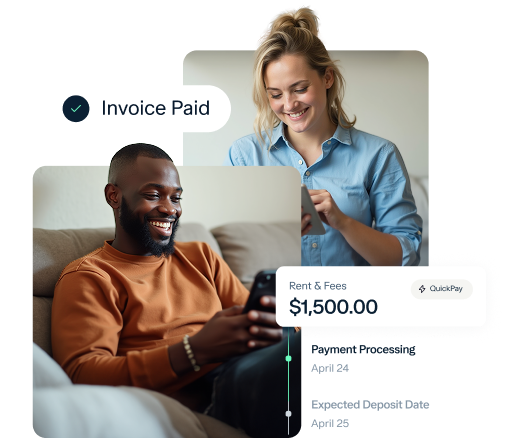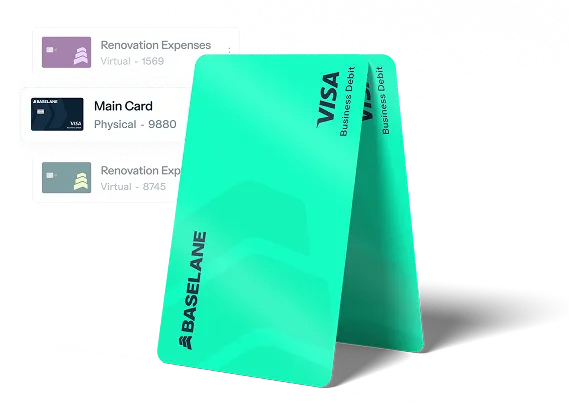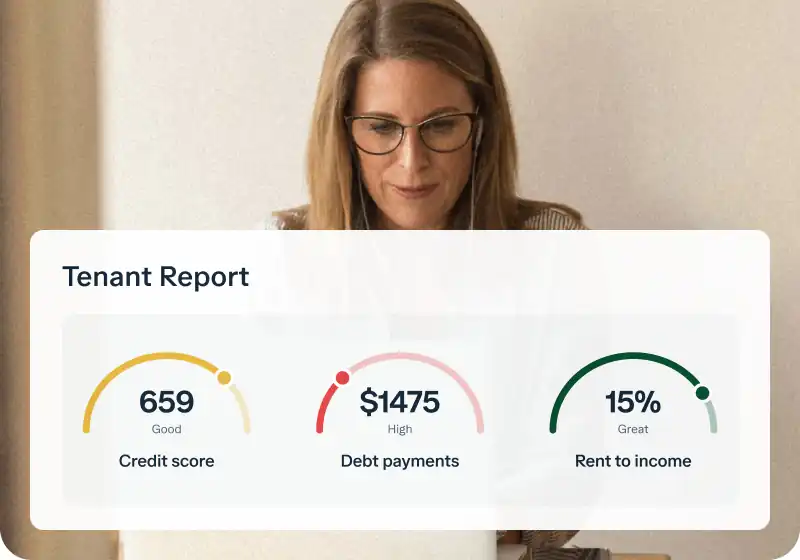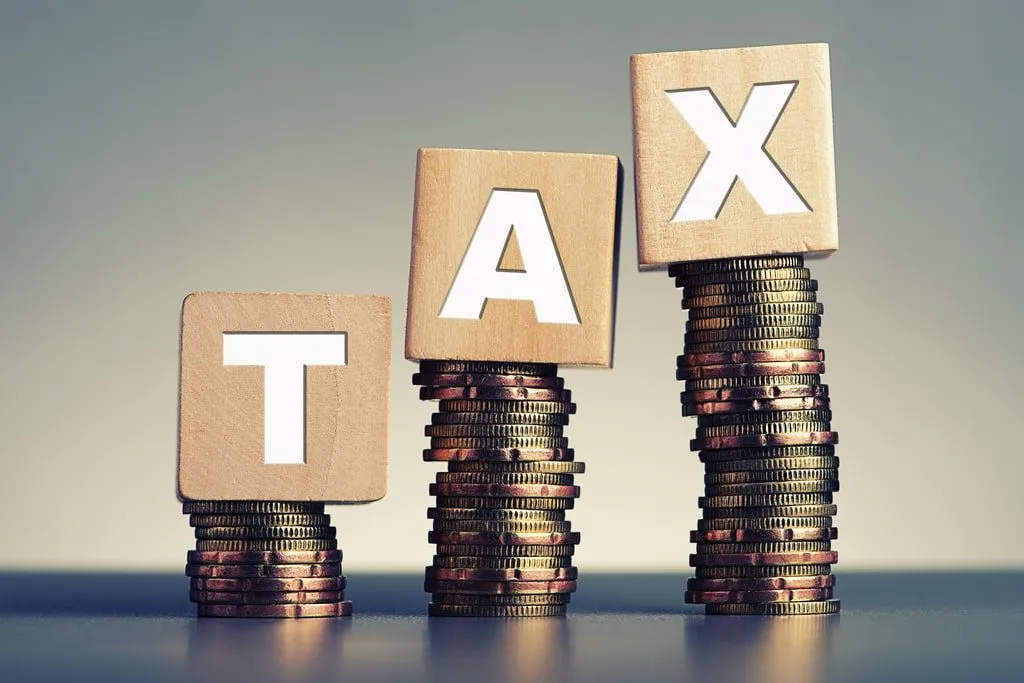As a real estate investor, selling a property can trigger significant capital gains and depreciation recapture taxes. A 1031 exchange offers a powerful strategy to defer these taxes, allowing you to reinvest the full sale proceeds into a new, "like-kind" property. Understanding the specific rules and timelines is crucial for a successful exchange in 2025.
Key takeaways
- A 1031 exchange allows real estate investors to defer capital gains taxes.
- Only real property held for investment or business use qualifies as like-kind.
- A Qualified Intermediary (QI) is essential to handle exchange funds.
- Investors must meet strict 45-day identification and 180-day exchange deadlines.
- Receiving "boot" (cash or mortgage relief) can trigger partial taxation.
How a 1031 Exchange Works
A 1031 exchange, also known as a like-kind exchange, is a method sanctioned by Section 1031 of the U.S. Internal Revenue Code. It allows real estate investors to postpone paying capital gains tax when they sell an investment property and reinvest the proceeds in another property.
By deferring the tax, investors can use 100% of their equity from the sale to acquire a new asset, potentially increasing their portfolio value and cash flow more quickly than if they paid taxes. This deferral is not elimination, though taxes may be permanently avoided if the property is held until death due to a stepped-up basis for heirs.
Core 1031 Exchange Rules for 2025
Navigating a 1031 exchange requires strict adherence to several key rules set by the IRS. Failing to meet these requirements can disqualify the exchange, making the full capital gain taxable. These rules govern everything from the type of property exchanged to the specific deadlines involved.
Like-kind property
A fundamental rule is that the exchange must involve "like-kind" property. For exchanges completed after the Tax Cuts and Jobs Act of 2017, only real property qualifies as like-kind.
This means you can exchange one piece of investment real estate for another, regardless of the specific type (e.g., a rental house for an apartment building, or raw land for a commercial property), as long as both are held for investment or business use. Personal property, like equipment or vehicles, no longer qualifies for 1031 exchanges.
The role of the qualified intermediary QI
A critical requirement for a valid 1031 exchange is the use of a Qualified Intermediary (QI). The QI is a neutral third party who holds the proceeds from the sale of the relinquished property. The investor cannot take possession of the sale funds during the exchange process; doing so would constitute "constructive receipt" and invalidate the tax deferral. The QI facilitates the transaction by receiving the funds and using them to purchase the replacement property on the investor's behalf.
45-day identification period rule
One of the most stringent rules is the 45-day identification period. Beginning on the day after the sale of the relinquished property closes, the investor has exactly 45 calendar days to formally identify potential replacement properties. This identification must be in writing and delivered to the Qualified Intermediary. There are specific rules regarding how many properties can be identified.
180-day exchange period rule
The second strict deadline is the 180-day exchange period. The investor must receive the replacement property within 180 days of the closing date of the relinquished property sale. This 180-day period runs concurrently with the 45-day identification period. Both deadlines are absolute and cannot be extended for weekends, holidays, or personal emergencies.
The equal or greater value rule
To achieve full tax deferral, the investor must reinvest all of the net proceeds from the relinquished property sale. The replacement property must be of equal or greater value than the relinquished property.
This includes reinvesting both the equity and replacing any debt that was on the relinquished property. If the value of the replacement property is less than the relinquished property, the difference may be considered taxable "boot".
Taxable "boot" in a 1031 exchange
In a 1031 exchange, "boot" refers to any non-like-kind property received by the investor. This can include cash, mortgage relief, or other assets. Receiving boot does not necessarily disqualify the entire exchange, but the amount of boot received is generally taxable up to the amount of the gain realized on the sale of the relinquished property.
Cash boot
Cash boot includes any cash proceeds from the sale that the investor receives directly, rather than being held by the QI and used to purchase the replacement property. It can also include funds left over after the QI purchases the replacement property if the entire proceeds were not reinvested. This direct or residual cash is typically taxable.
Mortgage Boot
Mortgage boot occurs when the investor's debt burden decreases in the exchange. If the debt on the replacement property is less than the debt that was paid off on the relinquished property, the difference is considered mortgage boot received by the investor. This debt relief is treated as taxable income. To avoid mortgage boot, the new property's financing should be equal to or greater than the financing of the old property.
Examples of Boot Calculation
Let's consider an example. Suppose an investor sells a property for $500,000 with a $100,000 mortgage and realizes a $200,000 gain. The net proceeds are $400,000 ($500,000 sale price minus $100,000 debt paid off).
If they acquire a replacement property worth $450,000 with a new mortgage of $50,000, they only reinvest $400,000 of value ($450,000 purchase price minus $50,000 new debt). They received $50,000 in mortgage relief ($100,000 old debt - $50,000 new debt), which is boot.
The $50,000 mortgage boot is taxable because it is less than the $200,000 realized gain.
If, in addition to the $50,000 mortgage boot, the QI returned $20,000 in leftover cash, the total boot would be $70,000. This $70,000 would be taxable, again because it is less than the $200,000 realized gain.
Effectively managing cash flow and tracking expenses is crucial throughout this process, where tools like Baselane can provide visibility into your property finances. Baselane's bookkeeping features can help track the basis and costs of the relinquished property, allowing for the accurate calculation of the gain, which is necessary to understand potential boot implications.
Different types of 1031 exchanges
While the Delayed Exchange is the most common, other structures exist to accommodate different transaction sequences. Each type must still adhere to the core 1031 exchange rules, including the like-kind requirement and the involvement of a QI (except in a strict simultaneous swap, which is rare). Understanding these variations can provide flexibility in certain situations.
Delayed exchange
This is the standard and most frequently used type of 1031 exchange. In a delayed exchange, the investor sells their relinquished property first. The sale proceeds go directly to a Qualified Intermediary. The investor then has the strict 45-day window to identify replacement properties and the strict 180-day window to close on the acquisition of one or more of the identified properties.
Simultaneous exchange
In a simultaneous exchange, the closing of the relinquished property and the replacement property occur on the same day. This type is less common due to the logistical challenges of coordinating two closings simultaneously. While it theoretically eliminates the need for a QI to hold funds temporarily, using a QI is still generally recommended to ensure proper documentation and adherence to rules.
Reverse exchange
A reverse exchange occurs when the investor acquires the replacement property before selling the relinquished property. This structure requires careful planning and the use of an Exchange Accommodation Titleholder (EAT), often related to the QI. The EAT 'parks' either the relinquished or replacement property temporarily until the other leg of the exchange can be completed within the 180-day timeframe.
Construction improvement exchange
Also known as a build-to-suit or improvement exchange, this type allows an investor to use exchange funds for improvements on the replacement property. The improvements must be completed and the property acquired by the investor within the 180-day exchange period. The QI or EAT typically holds the funds and disburses them for construction costs.
1031 exchanges in specific situations
Applying 1031 exchange rules to properties that have served mixed uses or that an investor intends to use differently in the future requires careful consideration. Specific guidelines and holding period expectations exist for scenarios involving vacation homes, future primary residences, and demonstrating investment intent. Adhering to these nuances is key to a successful exchange.
Vacation Homes and Second Homes
While 1031 exchanges are for investment or business properties, vacation homes or second homes can potentially qualify if they meet specific IRS guidelines regarding rental use. The IRS provides a safe harbor for dwelling units used as vacation homes.
Under this safe harbor, the property must be rented for at least 14 days per year, and the owner's personal use cannot exceed the greater of 14 days or 10% of the number of days rented. Meeting these criteria helps demonstrate the property was held primarily for investment.
Converting a 1031 Property to a Primary Residence
It is possible to convert a property acquired through a 1031 exchange into a primary residence later. However, specific rules apply regarding the holding period before conversion. The property must be held for investment intent for a period of time after the exchange before it can be converted to personal use.
While there isn't a strict statutory minimum in the core 1031 rules, holding periods of at least two years are often cited by experts as a general guideline to demonstrate investment intent, although individual circumstances vary. If you plan to convert the property soon after the exchange, it may indicate it was not acquired with investment intent, potentially invalidating the exchange.
How Long Should You Hold a 1031 Property?
The property being relinquished and the property being acquired must both be held for productive use in a trade or business or for investment. The IRS scrutinizes the investor's intent.
While there's no statutory minimum holding period within Section 1031 itself, holding periods that are too short (e.g., selling shortly after acquiring or trying to exchange a property held for personal use briefly) can lead the IRS to challenge the exchange based on a lack of investment intent.
Generally, holding a property for at least one to two years helps demonstrate investment intent, though this is a guideline, not a strict rule for 1031 qualification itself.
Common 1031 exchange pitfalls and how to avoid them
Executing a 1031 exchange successfully requires precision and careful planning. Even small errors can cause the entire exchange to fail, resulting in a large, unexpected tax bill. Being aware of the most common pitfalls can help investors navigate the process smoothly.
Proactive management and detailed record-keeping are essential throughout. Using a platform like Baselane can help landlords maintain meticulous records of income and expenses for each property, which is vital for demonstrating investment intent and accurately calculating the basis for tax purposes.
Missing deadlines
The 45-day identification period and the 180-day exchange period are absolute statutory deadlines. They are not extended for weekends, holidays, or personal issues. Missing either deadline, even by one day, will disqualify the exchange. Careful scheduling and working closely with your Qualified Intermediary and closing professionals are critical to staying on track.
Improper property identification
The identification of replacement properties within the 45-day window must follow specific IRS rules. There are rules regarding how many properties can be identified (the 3-Property Rule, the 200% Rule, or the 95% Rule). If the identification is not done correctly, the exchange can fail. Ensure your identification notice is in writing, unambiguous, and sent to your QI before the deadline.
Taking constructive receipt of funds
One of the quickest ways to invalidate an exchange is for the investor to touch or control the sale proceeds from the relinquished property. The funds must go directly from the buyer of the relinquished property to the Qualified Intermediary. Any direct access to the funds by the investor constitutes "constructive receipt" and makes the funds taxable. Work closely with your QI to ensure all funds flow correctly.
Related party transactions
While not always prohibited, exchanging properties with a related party (like family members or controlled entities) has additional restrictions. If you acquire replacement property from a related party, both you and the related party must hold the exchanged properties for at least two years after the exchange. Violating this holding period rule for related party exchanges can cause the deferred gain to become immediately taxable.
Choosing the wrong QI
The Qualified Intermediary plays a vital role and handles your sale proceeds. QIs are not federally regulated. Choosing a reputable and experienced QI is paramount to ensure the exchange is handled correctly and your funds are secure. Research their credentials, experience, and financial stability before engaging their services.
Reporting your 1031 exchange to the IRS Form 8824
When you complete a 1031 exchange, you must report it to the IRS. This is done using Form 8824, Like-Kind Exchanges. Form 8824 requires details about both the relinquished property and the replacement property, including their values, dates of transfer, and identification details.
You must file this form with your income tax return for the year the relinquished property was transferred. Keeping detailed records of both properties, including basis and sale/purchase documents, is essential for accurate reporting, a task simplified by comprehensive bookkeeping tools.
Baselane's bookkeeping features help investors track transaction details categorized by property, generating reports that can assist in preparing tax documents like Schedule E.
2025 trends and market factors affecting 1031 exchanges
The real estate market is dynamic, and current trends can significantly influence how investors utilize 1031 exchanges in 2025. Adapting strategies based on market conditions is key to finding suitable replacement properties and maximizing the exchange benefits. Several factors are shaping 1031 activity this year.
Shifts in preferred asset classes
Market dynamics are leading some investors to use 1031 exchanges to shift their holdings from one property type to another. For example, there is a noted trend of investors moving out of office properties. They are reinvesting in asset classes perceived as having stronger performance potential, such as multifamily, industrial, and retail assets. These shifts reflect changing demand and economic conditions.
Rise of passive investments
Another significant trend in 2025 is the increasing popularity of using 1031 exchanges to invest in passive real estate structures. Delaware Statutory Trusts (DSTs) and Triple Net (NNN) leased properties offer investors the opportunity to acquire fractional interests or single-tenant properties with long-term leases.
These options appeal to investors seeking less active management responsibilities while still deferring taxes through a like-kind exchange.
Impact of maturing debt and interest rates
A substantial volume of commercial real estate loans is scheduled to mature in 2025. As these loans come due in a higher interest rate environment compared to when they originated, some property owners may face challenges refinancing or selling.
This could potentially lead to more properties coming onto the market, increasing inventory available for 1031 buyers, or conversely, creating distressed sale situations that require strategic navigation.
Geographic migration trends
Population and business migration patterns continue to influence real estate demand in different regions. Investors are using 1031 exchanges to sell properties in areas with slower growth or declining prospects. They are reinvesting in properties located in markets experiencing inward migration and economic expansion. This allows investors to optimize their portfolios based on long-term demographic and economic forecasts.
Effectively tracking the performance of properties across different markets requires robust financial tools. Baselane provides real-time cash flow insights and analytics that help investors compare the financial health and potential of properties before and after an exchange.
Pros and Cons of 1031 Exchange
Deciding whether to pursue a 1031 exchange is a strategic decision with potential benefits and drawbacks. It's important to weigh these factors against your personal investment goals, risk tolerance, and market outlook. A 1031 exchange is a powerful tool, but not always the ideal solution for every situation.
Pros of a 1031 exchange
The primary advantage is the deferral of capital gains and depreciation recapture taxes. This allows investors to apply 100% of their equity towards the purchase of a replacement property, accelerating portfolio growth.
Over multiple exchanges, this compounding effect can significantly increase wealth compared to paying taxes on each sale. Furthermore, deferred taxes can be permanently eliminated through a stepped-up basis if the property is held until death.
Cons of a 1031 exchange
The most significant drawbacks are the strict timelines and rules. The 45-day identification period and 180-day exchange period allow little flexibility. Finding a suitable replacement property that meets the like-kind rules and value requirements within these windows can be challenging, especially in competitive markets.
Additionally, 1031 exchanges involve transaction costs, including Qualified Intermediary fees and potentially higher closing costs on two properties. It may also limit your ability to cash out equity if needed, as taking cash will result in taxable boot.
The importance of professional guidance
Given the complexity and strict requirements of a 1031 exchange, seeking professional advice is highly recommended. A qualified tax advisor or CPA specializing in real estate can help you understand your potential tax liability and determine if a 1031 exchange is the right strategy for your situation.
They can also guide you on calculating the basis and gain, which is fundamental to assessing potential boot. Additionally, consulting with an experienced Qualified Intermediary early in the process is crucial. They can explain the procedural requirements and ensure the exchange is structured correctly to comply with IRS regulations.
Bottomline
For real estate investors, a 1031 exchange remains a vital tool for strategic portfolio growth by deferring significant tax liabilities. By adhering strictly to the like-kind rules, working with a Qualified Intermediary, and meeting the precise 45-day identification and 180-day exchange deadlines, you can successfully navigate the process. Understanding potential pitfalls like boot and improper identification is crucial for avoiding costly mistakes.
Staying informed about 2025 market trends, such as shifts in asset classes and the impact of maturing debt, can help you make informed decisions when seeking replacement properties. While complex, a successful 1031 exchange allows you to reinvest your full equity, compounding your investment power over time. After completing an exchange, managing the finances of your new investment property efficiently is key to maximizing returns. Tools like Baselane are designed specifically for landlords and investors, offering integrated banking, bookkeeping, and analytics to streamline financial management, helping you save time and gain clarity as you grow your portfolio.
Checklist for a successful 1031 exchange
- Engage a Qualified Intermediary (QI) before closing on the relinquished property sale.
- Ensure the relinquished property is held for investment or business use.
- Sell the relinquished property and have the proceeds go directly to the QI.
- Formally identify potential replacement properties in writing to the QI within 45 days of the relinquished property closing.
- Ensure identified properties are "like-kind" real estate held for investment.
- Acquire one or more of the identified replacement properties through the QI within 180 days of the relinquished property closing.
- Ensure the replacement property is of equal or greater value than the relinquished property to defer all gain.
- Avoid receiving any cash or mortgage relief (boot) if full tax deferral is desired.
- File Form 8824 with your tax return for the year the relinquished property was sold.
- Keep detailed records of both properties and the exchange process.
- Consult with a tax advisor or CPA experienced in 1031 exchanges.
FAQs
What disqualifies a property from a 1031 exchange?
A property is disqualified if it's not held for investment or business use, such as a primary residence or a flip property intended for quick resale. Exchanging real property for personal property also disqualifies it after the 2017 tax law changes. Failing to meet the strict timelines or using funds personally instead of through a Qualified Intermediary will also invalidate the exchange.
What is the downside of a 1031 exchange?
The main downsides include the strict and inflexible deadlines for identifying and acquiring replacement property, the potential difficulty in finding a suitable replacement, and the transaction costs involved (like QI fees). It also ties up all your equity in real estate, preventing you from accessing cash without triggering a taxable event (boot).
What is the 95 rule in a 1031 exchange?
The 95% Rule is one of the ways to identify replacement properties in a 1031 exchange. Under this rule, you can identify any number of properties, but the total fair market value of the properties you actually acquire must be at least 95% of the total fair market value of all properties you initially identified within the 45-day period. The other identification rules are the 3-Property Rule (identify up to 3 properties of any value) and the 200% Rule (identify any number of properties whose total value does not exceed 200% of the relinquished property's value).
What types of properties are eligible for a 1031 exchange?
Only real property (real estate) held for investment or productive use in a trade or business is eligible for a 1031 exchange. This includes rental properties, commercial buildings, raw land, and industrial properties. A rental house can be exchanged for an apartment building, or a commercial property for land, as long as the investment intent is maintained.















